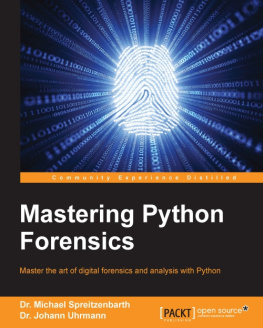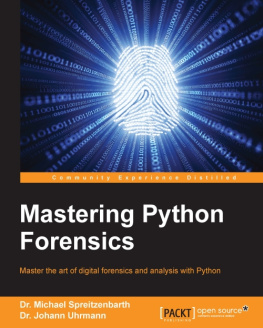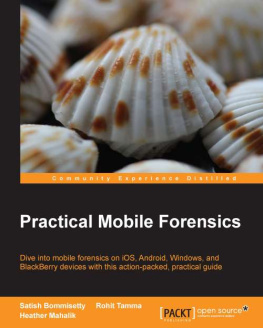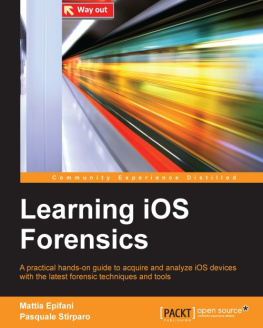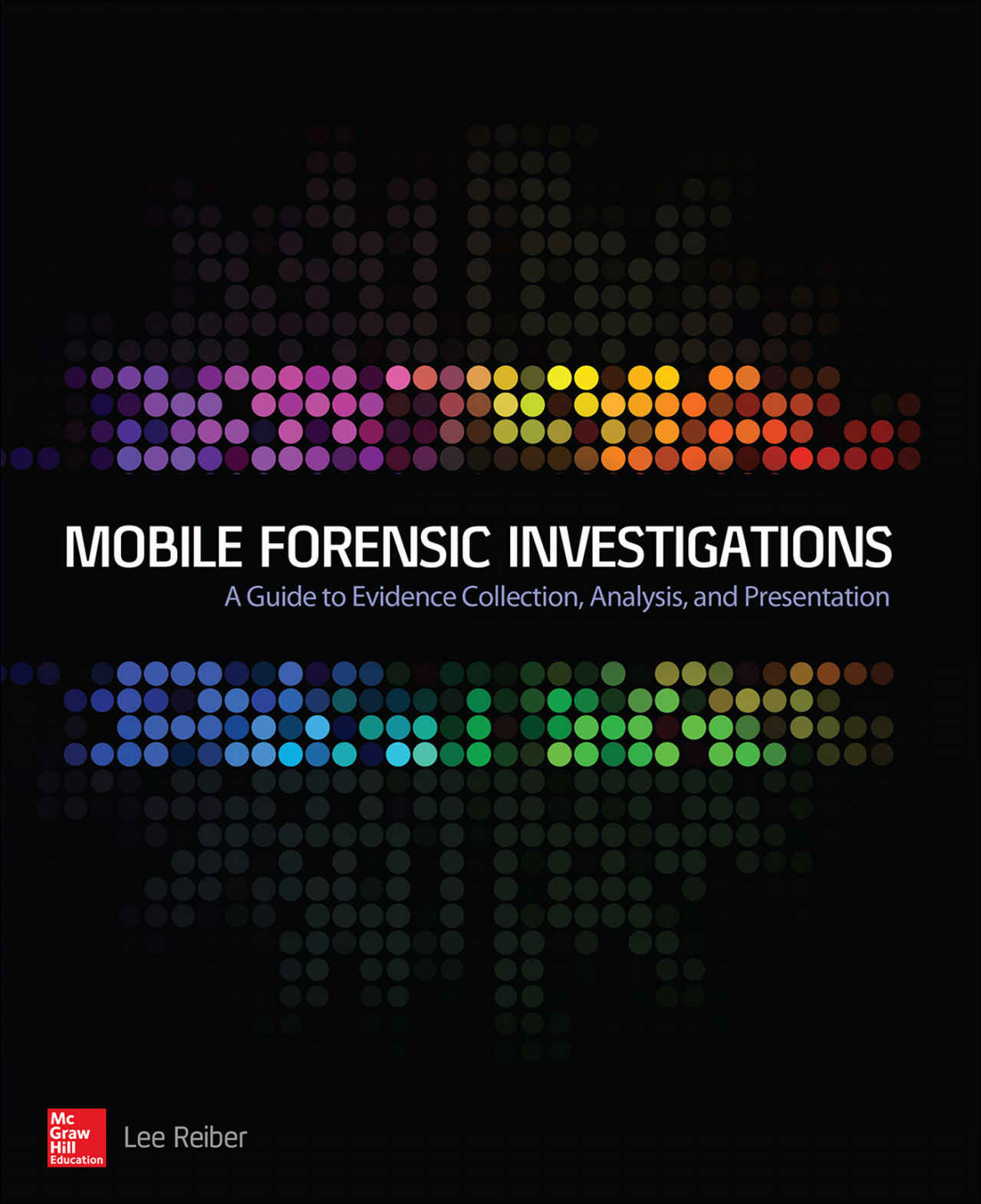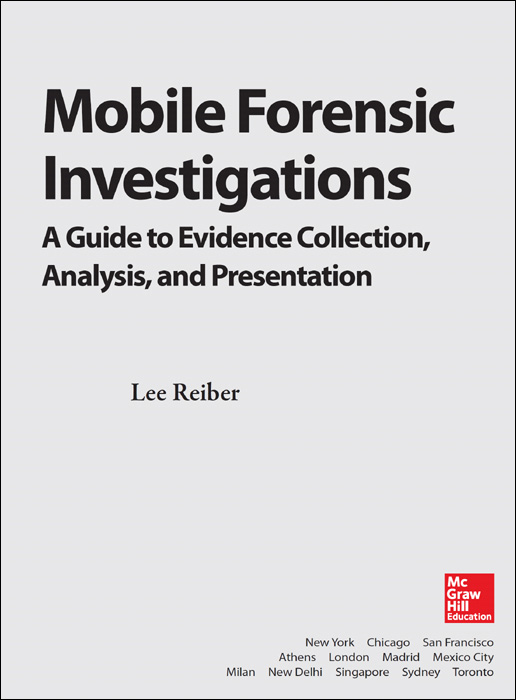
Copyright 2016 by McGraw-Hill Education. All rights reserved. Except as permitted under the United States Copyright Act of 1976, no part of this publication may be reproduced or distributed in any form or by any means, or stored in a data base or retrieval system, without the prior written permission of the publisher.
ISBN: 978-0-07-184364-5
MHID: 0-07-184364-7
The material in this eBook also appears in the print version of this title: ISBN: 978-0-07-184363-8, MHID: 0-07-184363-9.
eBook conversion by codeMantra
Version 1.0
All trademarks are trademarks of their respective owners. Rather than put a trademark symbol after every occurrence of a trademarked name, we use names in an editorial fashion only, and to the benefit of the trademark owner, with no intention of infringement of the trademark. Where such designations appear in this book, they have been printed with initial caps.
McGraw-Hill Education eBooks are available at special quantity discounts to use as premiums and sales promotions or for use in corporate training programs. To contact a representative, please visit the Contact Us page at www.mhprofessional.com.
Information has been obtained by McGraw-Hill Education from sources believed to be reliable. However, because of the possibility of human or mechanical error by our sources, McGraw-Hill Education, or others, McGraw-Hill Education does not guarantee the accuracy, adequacy, or completeness of any information and is not responsible for any errors or omissions or the results obtained from the use of such information.
TERMS OF USE
This is a copyrighted work and McGraw-Hill Education and its licensors reserve all rights in and to the work. Use of this work is subject to these terms. Except as permitted under the Copyright Act of 1976 and the right to store and retrieve one copy of the work, you may not decompile, disassemble, reverse engineer, reproduce, modify, create derivative works based upon, transmit, distribute, disseminate, sell, publish or sublicense the work or any part of it without McGraw-Hill Educations prior consent. You may use the work for your own noncommercial and personal use; any other use of the work is strictly prohibited. Your right to use the work may be terminated if you fail to comply with these terms.
THE WORK IS PROVIDED AS IS. McGRAW-HILL EDUCATION AND ITS LICENSORS MAKE NO GUARANTEES OR WARRANTIES AS TO THE ACCURACY, ADEQUACY OR COMPLETENESS OF OR RESULTS TO BE OBTAINED FROM USING THE WORK, INCLUDING ANY INFORMATION THAT CAN BE ACCESSED THROUGH THE WORK VIA HYPERLINK OR OTHERWISE, AND EXPRESSLY DISCLAIM ANY WARRANTY, EXPRESS OR IMPLIED, INCLUDING BUT NOT LIMITED TO IMPLIED WARRANTIES OF MERCHANTABILITY OR FITNESS FOR A PARTICULAR PURPOSE. McGraw-Hill Education and its licensors do not warrant or guarantee that the functions contained in the work will meet your requirements or that its operation will be uninterrupted or error free. Neither McGraw-Hill Education nor its licensors shall be liable to you or anyone else for any inaccuracy, error or omission, regardless of cause, in the work or for any damages resulting therefrom. McGraw-Hill Education has no responsibility for the content of any information accessed through the work. Under no circumstances shall McGraw-Hill Education and/or its licensors be liable for any indirect, incidental, special, punitive, consequential or similar damages that result from the use of or inability to use the work, even if any of them has been advised of the possibility of such damages. This limitation of liability shall apply to any claim or cause whatsoever whether such claim or cause arises in contract, tort or otherwise.
This book is dedicated to my wife, Amy, my biggest critic, who has put up with 20 years of geek speak and talk about writing a book, along with the last several months of staring at my laptop composing the book manuscript. You inspire me.
About the Author
Lee Reiber started his journey as a member of the Boise Police Department in Boise, Idaho, where he conducted digital forensic investigations until 2009 after almost 15 years of service. During the last few years at the police department, Lees training company, Mobile Forensics, Inc., became one of the most prominent training companies in the United States for mobile forensics, training hundreds of students from law enforcement, Fortune 500 companies, and academia. MFI specialized in instructing its students on how to interpret and analyze mobile device data collected with multiple tools. It was Lees research that produced discoveries in data formats, date and time configurations, and file system artifacts that are still used in training today. Due to the reputation of MFI, based upon the companys success in research, development, and training in mobile device forensics, MFI became a part of a global software company in 2009. Lee was promoted to Vice President of Mobile Forensics and he created and developed the mobile forensic curriculum and mobile forensic software solution, both of which are still a part of the companys offerings. In 2015, Lee departed the company and became the COO of one of the most recognized mobile forensic software companies in the world, specializing in deep data analysis of mobile device artifacts.
Lee has testified as an expert in mobile forensics in both criminal and civil cases during his 20-year career and consulted for both international and domestic companies requesting mobile forensic assistance, mobile device collections, data analysis, and data interpretation. Due to his aptitude for deep analysis, Lee is frequently called upon to assist in high-profile cases involving data from mobile devices when alien data is encountered. Lee has written more than 50 articles on mobile forensics, has been featured in both national and international magazines and print, and has lectured around the world on mobile forensics and cyber security. This book, Mobile Forensic Investigations: A Guide to Evidence Collection, Analysis, and Presentation, is a product of the 20 years spent staring at HEX and ignoring the push button philosophy.
About the Technical Editor
Michael Robinson is a senior cyber threat analyst and digital forensic examiner for a large international company, where he specializes in mobile device forensics, computer forensics, and intrusion analysis. Prior to this role, Michael was a senior digital forensic examiner for customers in the U.S. intelligence community, where he performed computer and cell phone exploitation and analysis. Previously, Michael performed computer forensic examinations in the FBIs Investigative Analysis Unit, where he assisted special agents with counterintelligence and criminal cases. Michael is the former CIO of the U.S. Department of Defenses Business Transformation Agency, where he oversaw all information technology and information assurance operations for the agency, including overseeing all incident response and forensic investigations.
Michael is the Program Coordinator and Adjunct Professor for Stevenson Universitys Master of Science in Cyber Forensics. At Stevenson, he was the recipient of the Rose Dawson Award for outstanding adjunct faculty member of the year. He is also an adjunct professor in George Mason Universitys Master of Science in Computer Forensics. He teaches courses in mobile device forensics, intrusion analysis, and cyber warfare. He holds a Bachelor of Science in Chemical Engineering, a Master of Science in Information Assurance, a Master of Science in Forensic Studies (concentrating on computer forensics), and a graduate certificate in Applied Intelligence. Michael has presented at numerous national and international conferences, including DEF CON, the DoD Cyber Crime Conference, U.S. Cyber Crime Conference, CEIC, InfoSec World, and the BCISS Conference on Intelligence Analysis. He has authored more than a dozen journal articles and a book on disaster recovery planning for nonprofit organizations.


